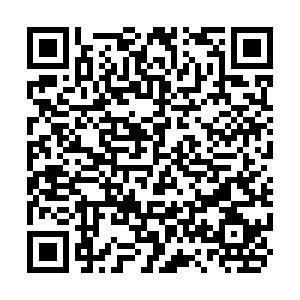Multi-grid cellular automata boarding model considering carried baggages
Article Text (Baidu Translation)
-
摘要: 为了精确描述旅客登机过程, 分析了经典的旅客登机模型, 考虑了旅客携带行李占用过道空间与步行速度, 刻画了2种新的过道干扰: 速度干扰和入座干扰, 建立了多格子元胞自动机登机模型, 根据旅客携带行李数量, 提出了多行李优先登机策略。分析结果表明: 当客座率为100%时, 新模型登机时间为1 455s, 干扰次数为6 720, 经典模型登机时间为1 244s, 干扰次数为5 412, 相比于经典登机模型, 新模型模拟了机舱内旅客运动的复杂情况, 元胞尺寸增大, 旅客间相互作用增强, 因此, 登机时间较长, 过道干扰较大, 比较符合实际旅客登机行为; 当客座率为100%时, 采用多行李优先登机策略的登机时间为1 303s, 相比随机登机策略减少了150s, 节省登机时间10.3%, 过道干扰次数为5 686, 相比随机策略减少了808次, 因此, 采用多行李优先登机策略能有效地减小过道干扰, 提高登机效率。Abstract: In order to accurately describe passenger boarding process, the classic boarding model was analyzed. The luggage-occupied aisle space and movement speed of passenger were considered, two new aisle interferences were proposed, namely speed interference and entering seat interference, and a multi-grid cellular automata boarding model was built. A multi-baggage priority boarding strategy was proposed according to the numbers of passengers' baggages. Analysis result shows that when the seat occupancy is 100%, the boarding time and interference number with the new model are 1 455 sand 6 720 times, respectively, while the corresponding values with the classic model are 1 244 sand 5 412 times. Compared with the classic model, in the new model, because the complexity of passenger movement in the cabin is simulated, the cell size and the interaction between passengers increase, so the boarding time is longer, and the aisle interference is larger, which more accords with the actual boarding behavior of passenger. When the seat occupancy is 100%, the multi-baggage priority boarding strategy is compared with the random boarding strategy, the boarding time is 1 303 sand decreases by 150 s, namely 10.3%, and the aisle interference number is 5 686 times and reduces 808 times, so the newboarding strategy can effectively reduce the aisle interference and improve the boarding efficiency.
-
表 1 行李模型参数
Table 1. Luggage model parameters

-
[1] BALL M, BARNHART C, DRESNER M, et al. Total delay impact study[R]. Berkeley: UC Berkeley Report, 2010. [2] NYQUIST D C, MCFADDEN K L. A study of the airline boarding problem[J]. Journal of Air Transport Management, 2008, 14 (4): 197-204. doi: 10.1016/j.jairtraman.2008.04.004 [3] MILNE R J, KELLY A R. A new method for boarding passengers onto an airplane[J]. Journal of Air Transport Management, 2014, 34 (1): 93-100. [4] VAN LANDEGHEM H, BEUSELINCK A. Reducing passenger boarding time in airplanes: a simulation based approach[J]. European Journal of Operational Research, 2002, 142 (2): 294-308. doi: 10.1016/S0377-2217(01)00294-6 [5] VAN DEN BRIEL M H L, VILLALOBOS J R, HOGG G L, et al. America West Airlines develops efficient boarding strategies[J]. Interfaces, 2005, 35 (3): 191-201. doi: 10.1287/inte.1050.0135 [6] STEFFEN J H. Optimal boarding method for airline passengers[J]. Journal of Air Transport Management, 2008, 14 (3): 146-150. doi: 10.1016/j.jairtraman.2008.03.003 [7] STEFFEN J H, HOTCHKISS J. Experimental test of airplane boarding methods[J]. Journal of Air Transport Management, 2012, 18 (1): 64-67. doi: 10.1016/j.jairtraman.2011.10.003 [8] FERRARI P, NAGEL K. Robustness of efficient passenger boarding strategies for airplanes[J]. Transportation Research Record, 2005 (1915): 44-54. [9] 尚华艳, 陆化普, 彭愚. 基于元胞自动机的乘客登机策略[J]. 清华大学学报: 自然科学版, 2010, 50 (9): 1330-1333. https://www.cnki.com.cn/Article/CJFDTOTAL-QHXB201009002.htmSHANG Hua-yan, LU Hua-pu, PENG Yu. Aircraft boarding strategy based on cellular automata[J]. Journal of Tsinghua University: Science and Technology, 2010, 50 (9): 1330-1333. (in Chinese). https://www.cnki.com.cn/Article/CJFDTOTAL-QHXB201009002.htm [10] NOTOMISTA G, SELVAGGIO M, SBRIZZI F, et al. A fast airplane boarding strategy using online seat assignment based on passenger classification[J]. Journal of Air Transport Management, 2016, 53: 140-149. doi: 10.1016/j.jairtraman.2016.02.012 [11] ZEINEDDINE H. A dynamically optimized aircraft boarding strategy[J]. Journal of Air Transport Management, 2017, 58: 144-151. doi: 10.1016/j.jairtraman.2016.10.010 [12] TANG Tie-qiao, WU Yong-hong, HUANG Hai-jun, et al. An aircraft boarding model accounting for passengers'individual properties[J]. Transportation Research Part C: Emerging Technologies, 2012, 22: 1-16. doi: 10.1016/j.trc.2011.11.005 [13] JAEHN F, NEUMANN S. Airplane boarding[J]. European Journal of Operational Research, 2015, 244 (2): 339-359. doi: 10.1016/j.ejor.2014.12.008 [14] BACHMAT E, BEREND D, SAPIR L, et al. Analysis of airplane boarding times[J]. Operations Research, 2009, 57 (2): 499-513. doi: 10.1287/opre.1080.0630 [15] QIANG Sheng-jie, JIA Bin, XIE Dong-fan, et al. Reducing airplane boarding time by accounting for passengers'individual properties: a simulation based on cellular automaton[J]. Journal of Air Transport Management, 2014, 40: 42-47. doi: 10.1016/j.jairtraman.2014.05.007 [16] CHUNG C A. Simulation design approach for the selection of alternative commercial passenger aircraft seating configurations[J]. Journal of Aviation Technology and Engineering, 2012, 2 (1): 100-104. doi: 10.5703/1288284314861 [17] 冯霞, 张鑫, 陈锋. 飞机过站上客过程持续时间分布[J]. 交通运输工程学报, 2017, 17 (2): 98-105. http://transport.chd.edu.cn/article/id/201702011FENG Xia, ZHANG Xin, CHEN Feng. Boarding duration distribution of aircraft turnaround[J]. Journal of Traffic and Transportation Engineering, 2017, 17 (2): 98-105. (in Chinese). http://transport.chd.edu.cn/article/id/201702011 [18] BAZARGAN M. A linear programming approach for aircraft boarding strategy[J]. European Journal of Operational Research, 2007, 183 (1): 394-411. doi: 10.1016/j.ejor.2006.09.071 [19] SOOLKI M, MAHDAVI I, MADAVI-AMIRI N, et al. A new linear programming approach and genetic algorithm for solving airline boarding problem[J]. Applied Mathematical Modelling, 2012, 36 (9): 4060-4072. doi: 10.1016/j.apm.2011.11.030 [20] 柯源. 飞机登机策略分析Ⅰ-离散时间模拟模型[J]. 数学的实践与认识, 2007, 37 (18): 85-94. https://www.cnki.com.cn/Article/CJFDTOTAL-SSJS200718013.htmKE Yuan. Analysis of airplane boarding strategiesⅠ-a discrete event simulation model[J]. Mathematics in Practice and Theory, 2007, 37 (18): 85-94. (in Chinese). https://www.cnki.com.cn/Article/CJFDTOTAL-SSJS200718013.htm [21] 任新惠, 唐少勇. 单通道客机登机策略模拟研究[J]. 科学技术与工程, 2015, 15 (1): 120-125. https://www.cnki.com.cn/Article/CJFDTOTAL-KXJS201501023.htmREN Xin-hui, TANG Shao-yong. The simulation study of single aisle aircraft boarding strategy[J]. Journal of Science Technology and Engineering, 2014, 15 (1): 120-126. (in Chinese). https://www.cnki.com.cn/Article/CJFDTOTAL-KXJS201501023.htm [22] GIITSIDIS T, SIRAKOULIS G C. Modeling passengers boarding in aircraft using cellular automata[J]. IEEE/CAA Journal of Automatica Sinica, 2016, 3 (4): 365-384. doi: 10.1109/JAS.2016.7510076 [23] TANG Tie-qiao, HUANG Hai-jun, SHANG Hua-yan. A new pedestrian-following model for aircraft boarding and numerical tests[J]. Nonlinear Dynamics, 2012, 67 (1): 437-443. doi: 10.1007/s11071-011-9992-7 [24] TAJIMA Y, NAGATANI T. Clogging transition of pedestrian flow in T-shaped channel[J]. Physica A: Statistical Mechanics and its Applications, 2002, 303 (1/2): 239-250. [25] SONG Wei-guo, XU Xuan, WANG Bing-hong, et al. Simulation of evacuation processes using a multi-grid model for pedestrian dynamics[J]. Physica A: Statistical Mechanics and its Applications, 2006, 363 (2): 492-500. -





 下载:
下载:














